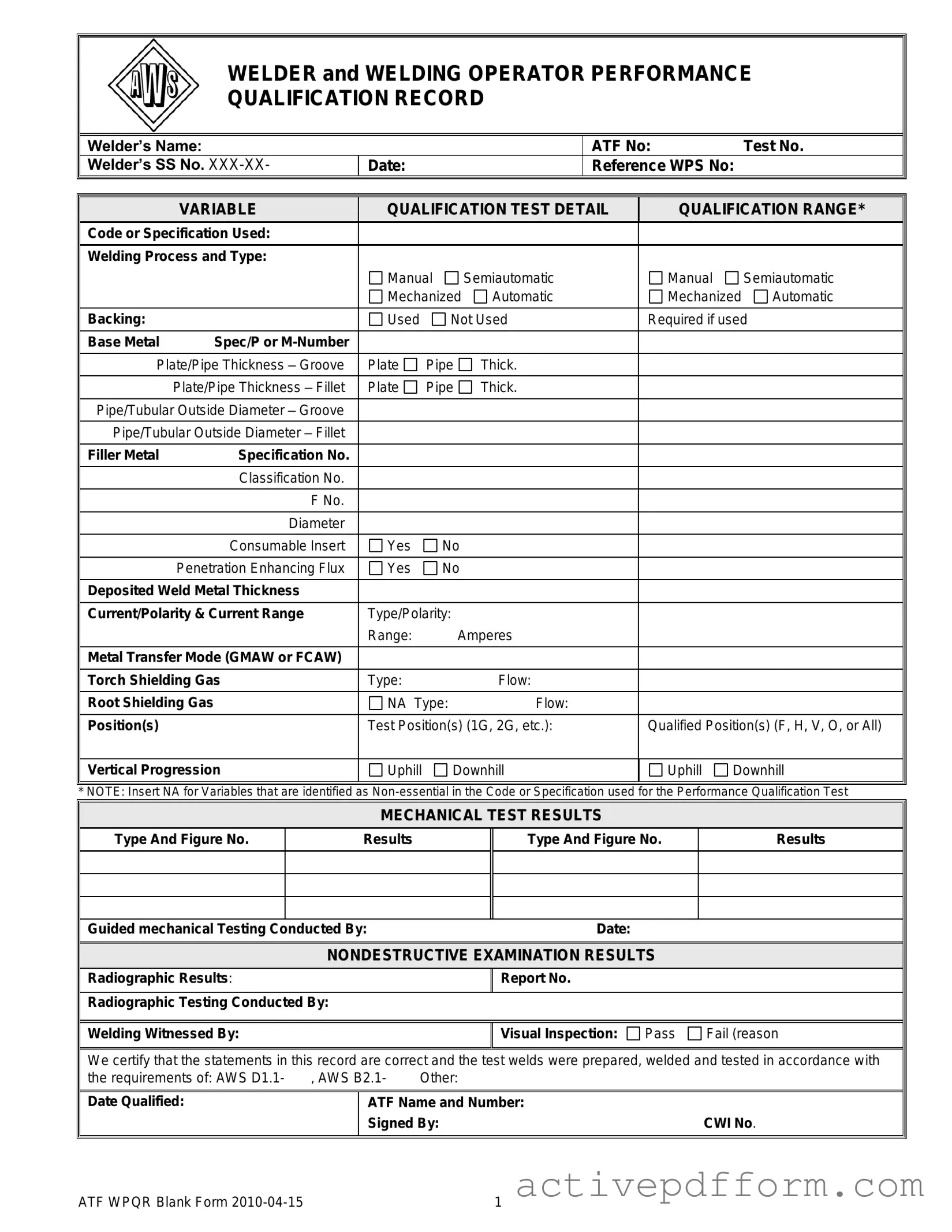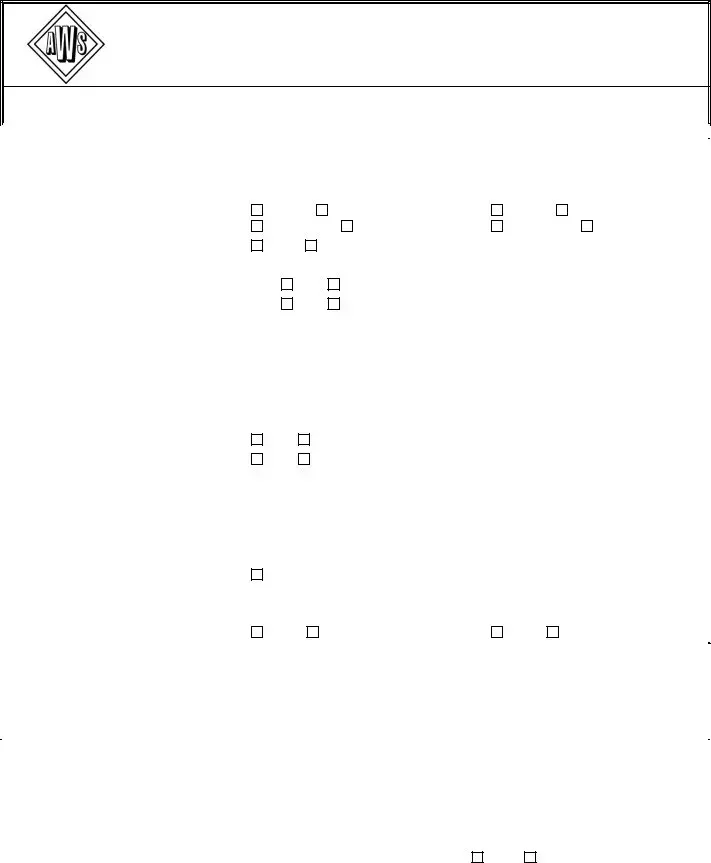What is a Welder Performance Qualification Record (WPQR)?
A Welder Performance Qualification Record is a document that certifies a welder's ability to perform specific welding tasks. It details the qualifications of the welder based on tests they have completed, ensuring they meet industry standards. This record is crucial for employers to verify a welder's skills and for welders to showcase their qualifications.
Who needs to complete a WPQR?
Welders and welding operators need to complete a WPQR. This form is especially important for those working in industries that require certified welding, such as construction, manufacturing, and shipbuilding. Completing the WPQR demonstrates that the welder has the necessary skills to perform specific welding tasks safely and effectively.
What information is included in the WPQR?
The WPQR includes the welder's name, identification numbers, the date of testing, and details about the welding process used. It also outlines the materials involved, the types of tests conducted, and the results of those tests. This comprehensive information helps ensure that all qualifications are documented clearly.
What types of welding processes are covered?
The WPQR covers various welding processes, including manual, semiautomatic, mechanized, and automatic methods. Each process has specific requirements and qualifications, which are documented in the record. This variety allows for a wide range of welding applications to be certified.
How long is a WPQR valid?
The validity of a WPQR can vary based on company policies and industry standards. Generally, it remains valid as long as the welder continues to work in the same position and uses the same techniques. If a welder changes processes or materials, they may need to retake the qualification tests and update their WPQR.
What is the role of non-destructive examination results in the WPQR?
Non-destructive examination (NDE) results are essential for validating the quality of the welds. These tests, such as radiographic or visual inspections, help ensure that the welds meet safety and quality standards. The results are documented in the WPQR to provide evidence of the weld's integrity.
How do I obtain a WPQR?
To obtain a WPQR, a welder typically needs to complete a qualification test through a certified organization or employer. After passing the test, the organization will fill out the WPQR form, documenting the welder's qualifications. It's important to work with a reputable testing facility to ensure the qualifications are recognized.
Can I use a WPQR from a different employer?
Using a WPQR from a different employer may not be straightforward. Each WPQR is specific to the welder's qualifications under particular conditions set by the employer. If you change jobs, your new employer may require you to undergo their qualification process, even if you have a valid WPQR from a previous employer.
What should I do if I need to update my WPQR?
If you need to update your WPQR, you should contact the organization that issued it. You may need to retake qualification tests if you have changed welding processes, materials, or positions. Keeping your WPQR current is essential for maintaining your qualifications and employment opportunities.

